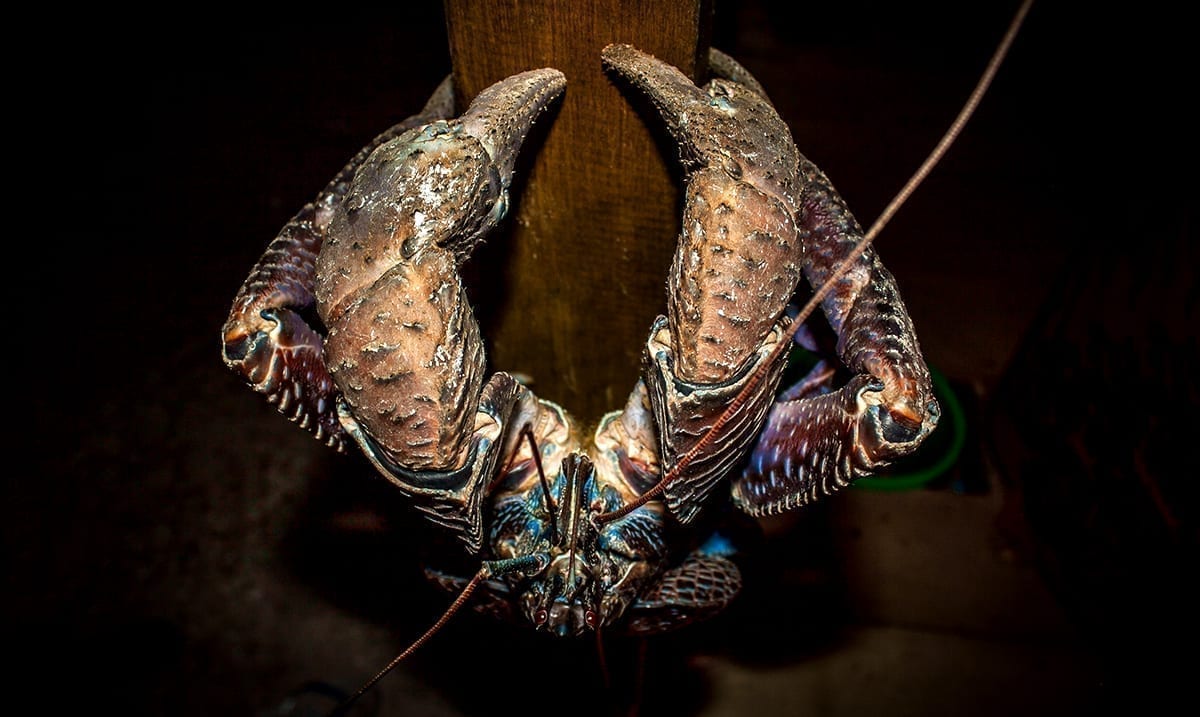There are many different animals on this planet but the coconut crab really does scare me more than most. If you’ve never seen one, boy are you lucky.
Now, don’t get me wrong everything has its place here on this planet and I don’t think that these crabs should disappear or anything like that, but they do send shivers down my spine even when I look at photos of them. They are enormous and honestly, quite powerful. We really don’t know anywhere near as much as we should about them and with that, we’re kind of missing out in that sense.
Coconut crabs eat as you would expect, coconuts but sometimes they eat other things as well. They are good at climbing up coconut trees to get the delicious coconuts but sometimes they feed on birds and things of that sort. Their claws are very powerful as you might expect from such a big crab and well, breaking bird bones is an easy feat for them.
For those who might not know, these crabs are easily the size of a small dog, according to Dartmouth, and well, that’s pretty darn big for a crab. Sadly their numbers are nowhere near what they should be though because people tend to kill them to eat them as well, they’re huge crabs, and we all love crab, don’t we? We as human beings tend to overdo things and it seems that’s what we’re doing/have done with this species, for sure.
Dartmouth wrote as follows on their website about this particular crab:
As their numbers dwindle, these “invertebrate dinosaurs” need to be better understood, says Mark Laidre, an assistant professor of biological sciences. With a research grant from the National Geographic Society, he has been studying the crabs’ biology, behavior, and ecology in one of their few remaining strongholds, the Chagos Archipelago in the Indian Ocean.
“These crabs may weigh up to nine pounds, have a leg span of more than a meter across, and live more than 60 years,” says Laidre. Strong and well armored, they are also skilled hunters. Laidre has a paper, which will be published later this year, describing gory details of coconut crabs preying on other animals.
But despite their intimidating size, coconut crabs are in trouble, he says. “People are eating them or destroying their habitat. With sea levels rising, in another 10 to 20 years many of the coral atolls on which they live are going to get drowned.”
The crabs’ longevity is another factor working against their survival as a species. “It’s not hard to totally decimate populations since it might take 50 to 100 years to fill the void left by the harvested adults,” Laidre says.
Although the coconut crab has not been declared a threatened species, the International Union for Conservation of Nature has classified the species as “data deficient.” This means that “even though the species has become locally extinct on many islands, no one has compiled information over their range throughout the Indo-Pacific,” Laidre says. With a network of collaborators, he is trying to change this, launching an effort to conduct systematic census taking and collecting data on populations’ genetic diversity.
Now, these interesting crabs come in a few different colors. Some of them are red or brown while others are even almost black or blue. With this, they are somehow kind of pretty even if they do make my skin crawl. To learn more about these amazing creatures take a look at the video below. They’re extremely unique and honestly, we should be doing more for them to help keep them alive for the future.

